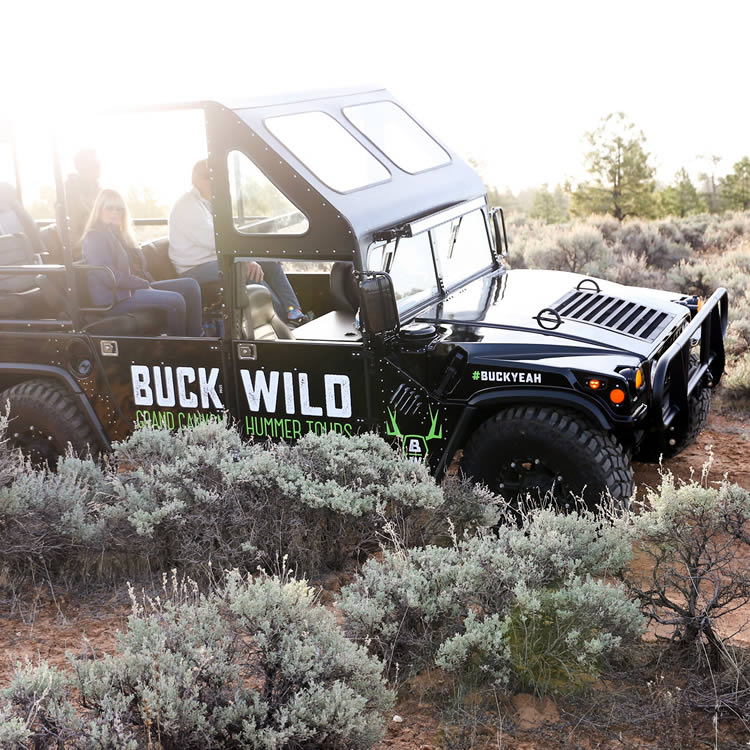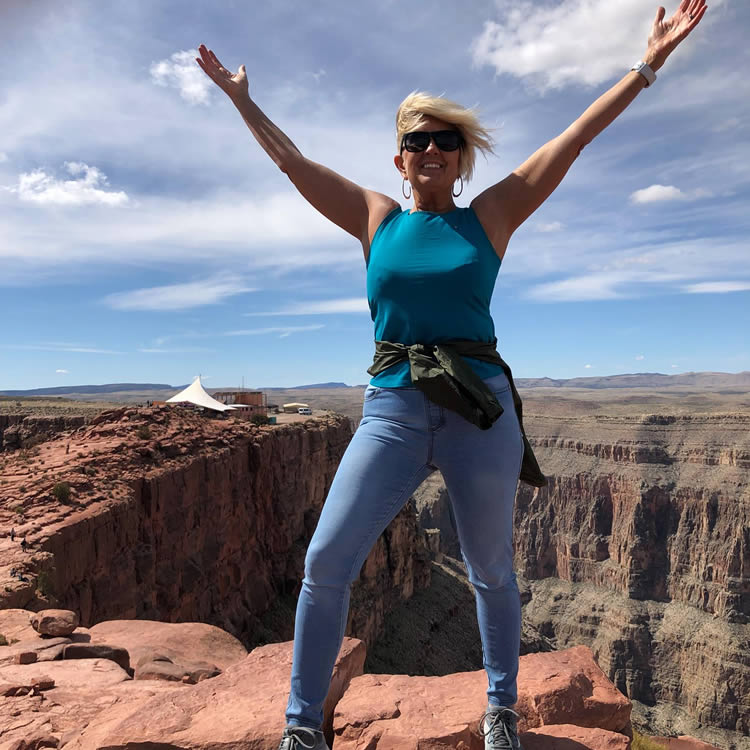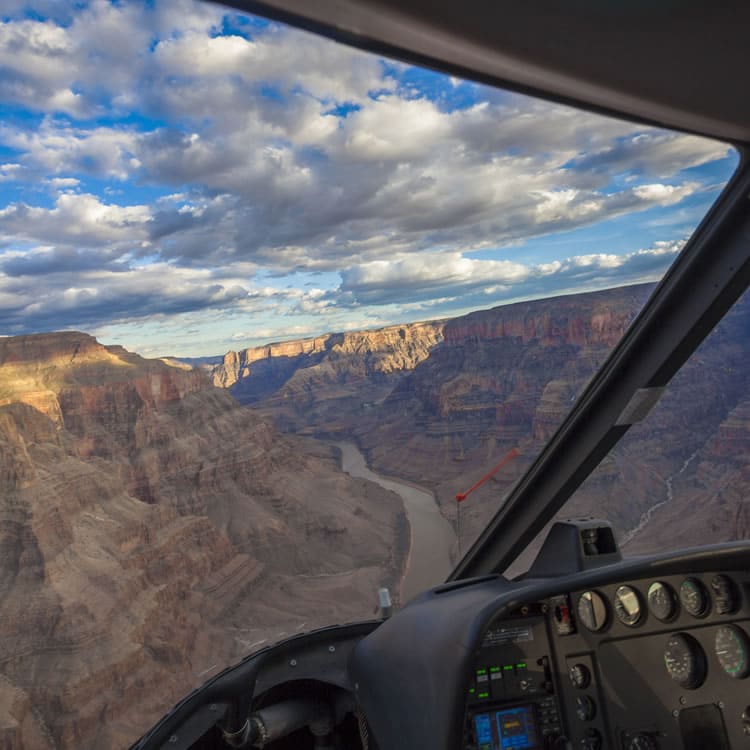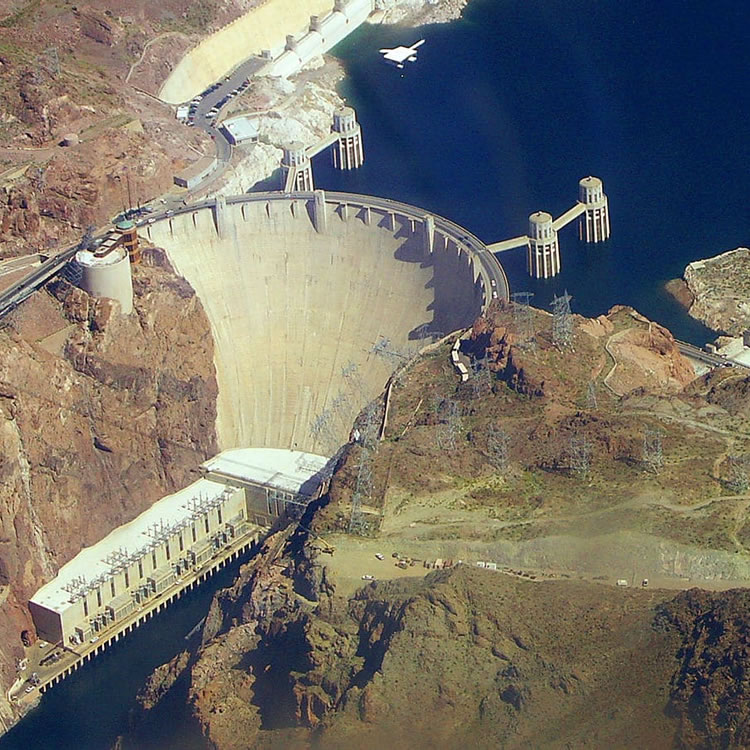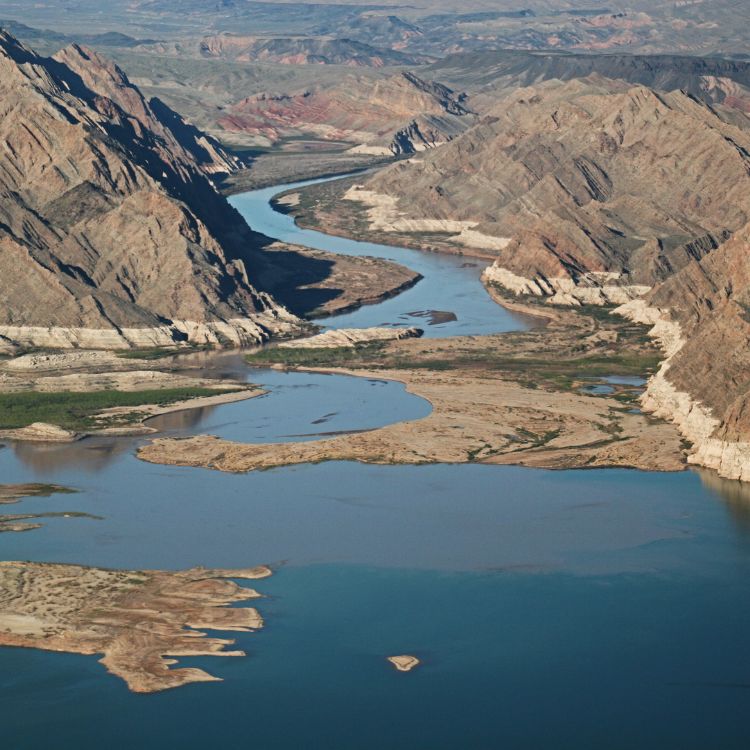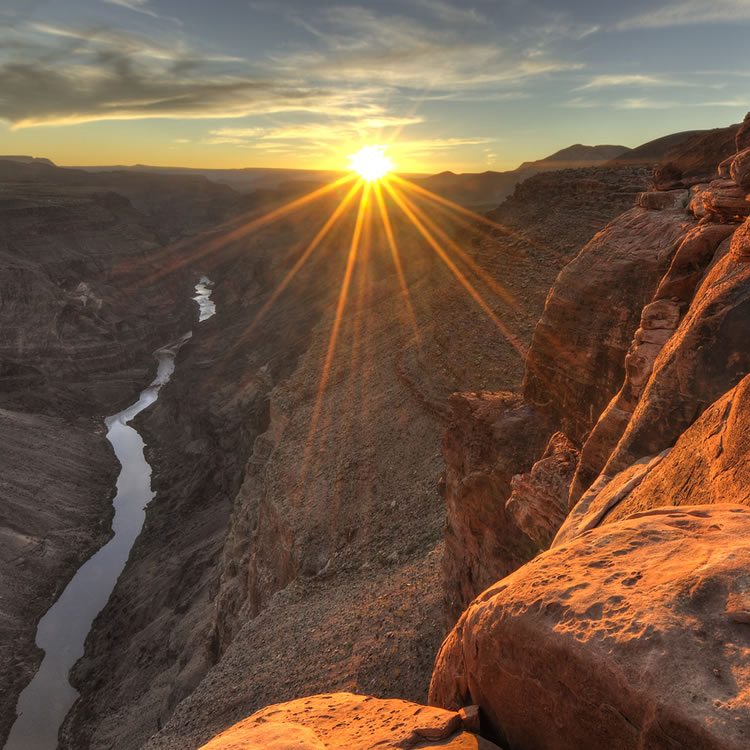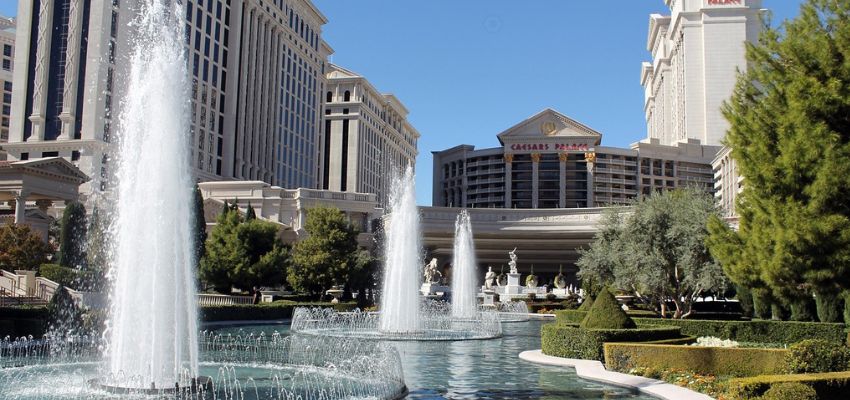Things to Know Before your Winter Trip to the Grand Canyon

With year-round warm temperatures and nearly 300 days of sun per year, Las Vegas is a mecca for cold-climate dwellers (and residents of warm climates as well, of course) looking to enjoy some sun during the winter months. Many Vegas visitors take advantage of Sin City’s proximity to the Grand Canyon by making their way through the desert to this iconic monument, but while Las Vegas may bask under the desert sun during the winter, the Grand Canyon experiences a much more conventional winter climate.
If you’re thinking about adding a Grand Canyon adventure to your Las Vegas vacation, don’t let cooler temperatures and a little snow deter you. There are a number of advantages of visiting the Grand Canyon in winter, including:
- There are fewer crowds. The winter months experience roughly f the crowds seen during the summer. That means it’ll be easier to snap that #CanyonSelfie, you won’t have to fight crowds at restaurants or in the Grand Canyon Village, and booking accommodation will be easier if you want to stay overnight.
- The views are even better. There’s less haze in the winter, so barring any winter weather, visibility is higher. You can easily spot mountain peaks over 200 miles away, and there’s nothing more stunning than fresh blanket of snow covering the bright red rocks of the Canyon. Plus, the days are shorter, so it’ll be easier to catch a sunrise or sunset.
- Aside from during the holiday season, park lodges and area hotels may offer reduced rates.
- It’s not nearly as hot. During the summer, high temperatures at the South Rim average around the low to mid 80s, while the mercury at the West Rim rises to the low 100s. During the winter, you can expect South Rim highs in the low to mid 40s, and West Rim highs in the mid 50s to low 60s. If you don’t like the heat, a winter visit may be the best for you.
Not convinced? Here’s a closer look at why you should visit the Grand Canyon in winter.
If you’re ready to leave the sunny heat of the Las Vegas Valley to experience the true beauty of the Grand Canyon in winter, here’s what you need to know before you go.
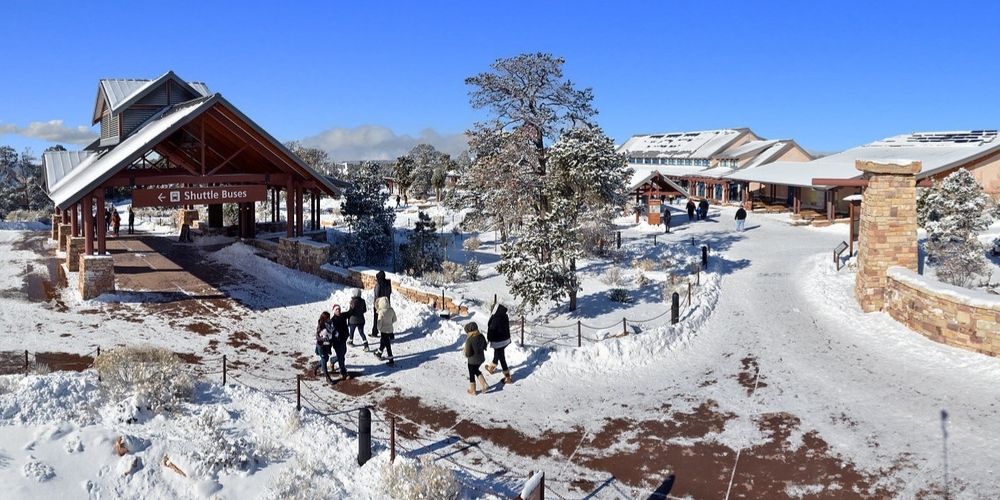
1. Some areas close during the winter
The South Rim is open year round: roads are drivable unless there is inclement weather, and everything in the Grand Canyon Village and along the Rim Trail is open for business. The West Rim is also accessible year-round, but the North Rim experiences a harsher winter due to its higher elevation, so it closes to vehicle traffic every year from mid-November to mid-May. Backcountry camping on the North Rim is available by permit.
Explore South Rim & Grand Canyon West Tours:
Grand Canyon South Rim Bus Tour with Lunch & Free Wi-Fi
$85.00Grand Canyon South Rim Deluxe Upgrade with IMAX
$80.00 – $250.00Grand Canyon West Rim Bus Tour with Optional Skywalk & Free Wi-Fi
$85.00 – $150.00Grand Canyon Helicopter Floor Landing with Las Vegas Strip Upgrade
$579.00 – $654.002. The weather changes quickly
The weather at the Grand Canyon can change very quickly, and so can visibility. Total whiteouts and snowfall does occur, so pack and prepare for all seasons:
- Dress warmly. Keep reading for our suggestions on what to wear.
- Bring winter gear, including hats, mittens, and crampons if you plan on doing any walking.
- If you’re driving yourself, pack an emergency travel kit.
3. Prepare for ice and snow
It may be the desert, but it still snows regularly at the Grand Canyon. Roads at the South Rim rarely close due to weather, but they can be blocked off temporarily, so whether you’re driving yourself or taking a guided tour, make sure you leave some wiggle room in your schedule to account for inclement weather.
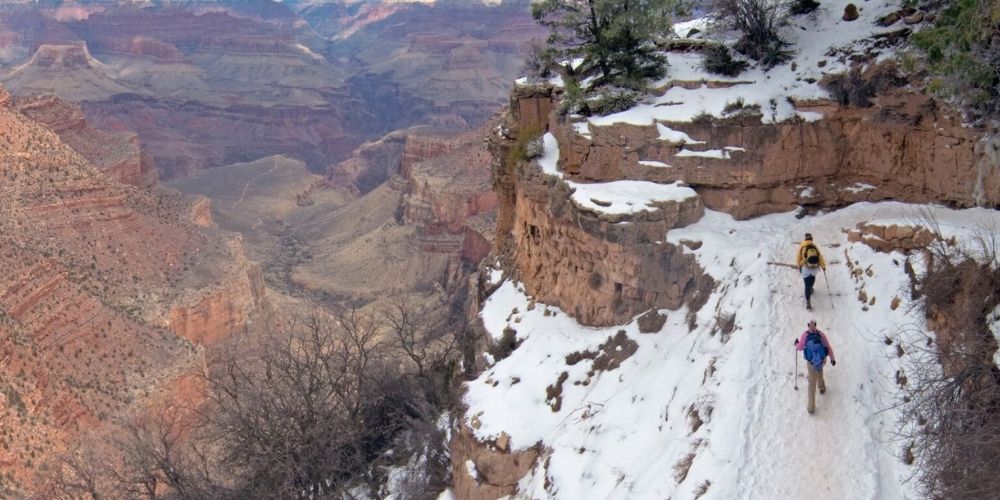
4. Dress warmly
Wear a warm winter jacket, mittens, and a hat, and dress in layers—it gets warm in the sun, especially if you’re hiking.
The South Rim is colder than the West Rim, so keep these tips in mind:
South Rim
- Long pants
- Warm sweater
- Heavy winter coat
- Insulated gloves, scarf, and warm hat (preferably one that covers your ears)
- Warm boots with good tread
- Sunglasses
View Grand Canyon South Rim tours.
West Rim
- Long pants
- Sweater
- Medium-weight jacket
- Hat and gloves
- Thick socks
- Warm boots with good tread
- Sunglasses
5. Don’t forget about the sun
It may be cool out, but the sun’s rays are still bright and direct, so pack your sunglasses and apply sunscreen to any exposed skin.
If you plan on doing any hiking, make sure you stay hydrated. The climate is drier than you might expect, and dehydration is still a risk in the winter.
6. You’ll still see wildlife
Most of the Grand Canyon’s wild inhabitants slow down during the winter months, but some wildlife may actually be easier to spot because they aren’t hiding in the shade and are more likely to stand out against a snowy white backdrop. During the winter, mule deer, bald eagles, elk, California Condors, ravens, and squirrels can still be found along the Rim and in nearby forests.
Discover 6 cool creatures to keep your eyes peeled for while you visit.
7. If you’re driving yourself, pack a winter travel kit
Your winter travel kit should include:
- Shovel
- Windshield scraper and fluid
- Flashlight
- Battery powered radio and extra batteries
- Food and water
- Matches and tea light candles
- Extra hat, socks, and mittens
- First aid kit
- Medications
- Blankets
- Tow chain and rope
- Road salt and sand
- Booster cables
8. Or, sit back and relax on a guided tour
Guided tours to the Grand Canyon run year-round—even on Christmas Day. The advantage of a guided tour is that you won’t have to worry about driving through winter weather, and you can sightsee without having to brave the elements.
Helicopter rides can be especially stunning in the winter. Soar over bright red peaks covered in a blanket of snow on one of these popular adventures:
Browse Helicopter Tours:
Grand Canyon Helicopter Floor Landing with Las Vegas Strip Upgrade
$579.00 – $654.00Grand Canyon Exclusive Floor Landing Helicopter Tour
$499.00 – $589.00Grand Canyon Helicopter Tour
$399.00 – $449.00Grand Canyon Exclusive Floor Landing Helicopter Sunset Tour
$649.00 – $669.009. Hike safe
If you’re planning on hiking, snow boots and crampons are advised—some areas of the trail may be icy. The Rim Trail is a great beginner’s hike, especially in the winter; it’s easy, scenic, and it doesn’t descend into the Canyon. Whichever trail you decide to traverse, stay on the path—if there’s snow, the edge of the Canyon can be harder to spot.
10. Celebrating the holidays
If you’re at the Grand Canyon during the holiday season, make sure you check out some of the seasonal activities along the Rim:
- El Tovar Hotel offers a special holiday meal.
- The entire Grand Canyon Village is decked out holiday decor (and holiday shopping abounds as well).
- Sip hot cocoa next to a decorated tree while bathed in the warm glow of the famous fireplace at Hermit’s Rest.
11. Arizona doesn’t observe daylight savings
Arizona doesn’t observe daylight savings, but the state of Nevada does. If you’re visiting from Las Vegas or other surrounding states, keep the time change in mind when planning your itinerary (especially if you want to catch the sunrise or sunset) and scheduling tours and other activities.
Winter Wonderland
With fewer crowds and views as stunning as they are in summer, don’t let the cooler temperatures and chance of snow stop you from exploring the nearby Grand Canyon in winter if you’re visiting Las Vegas this season.




